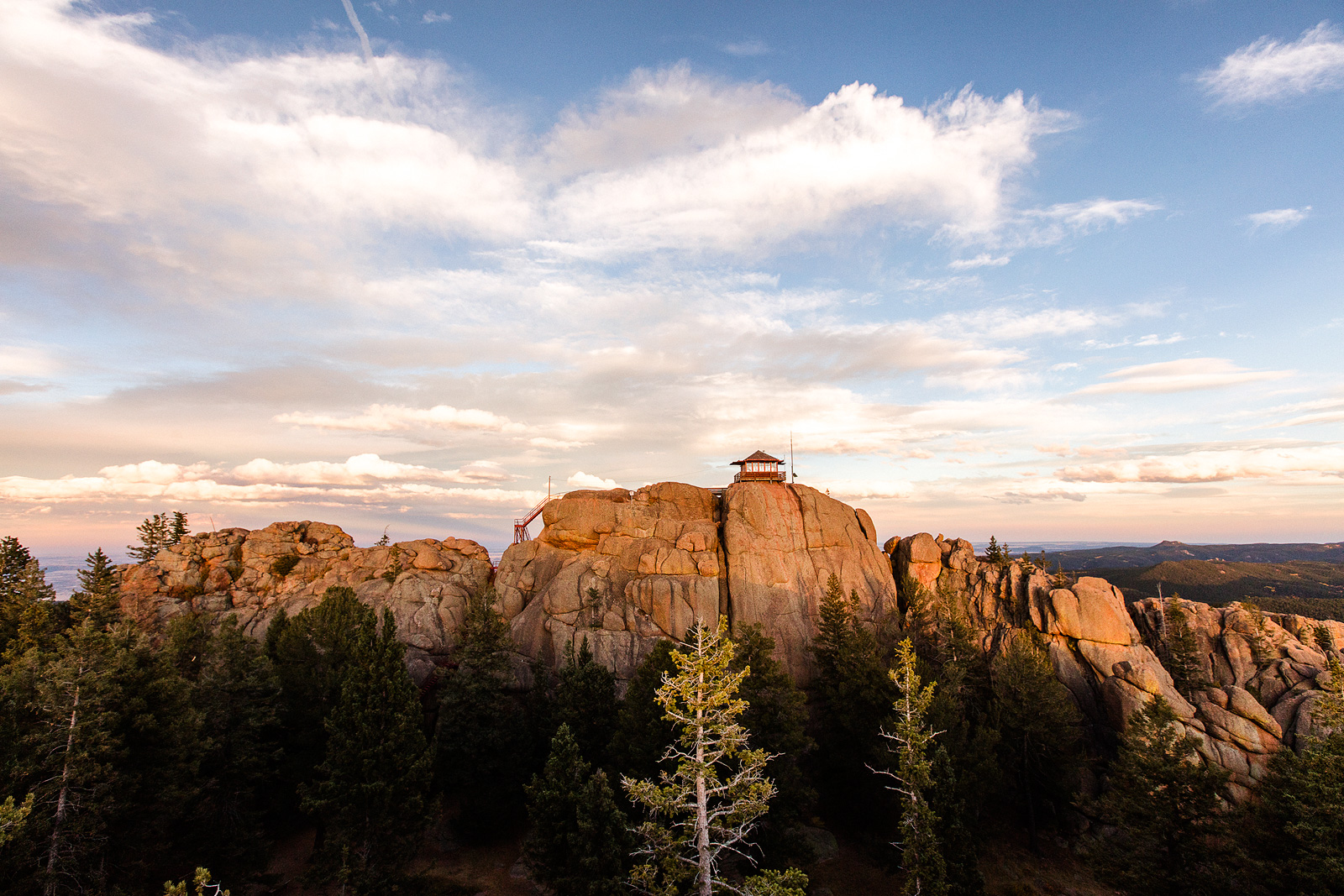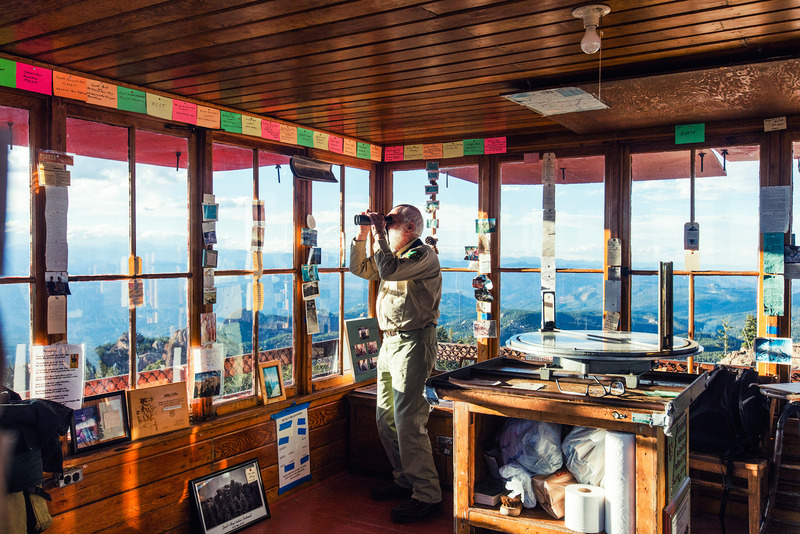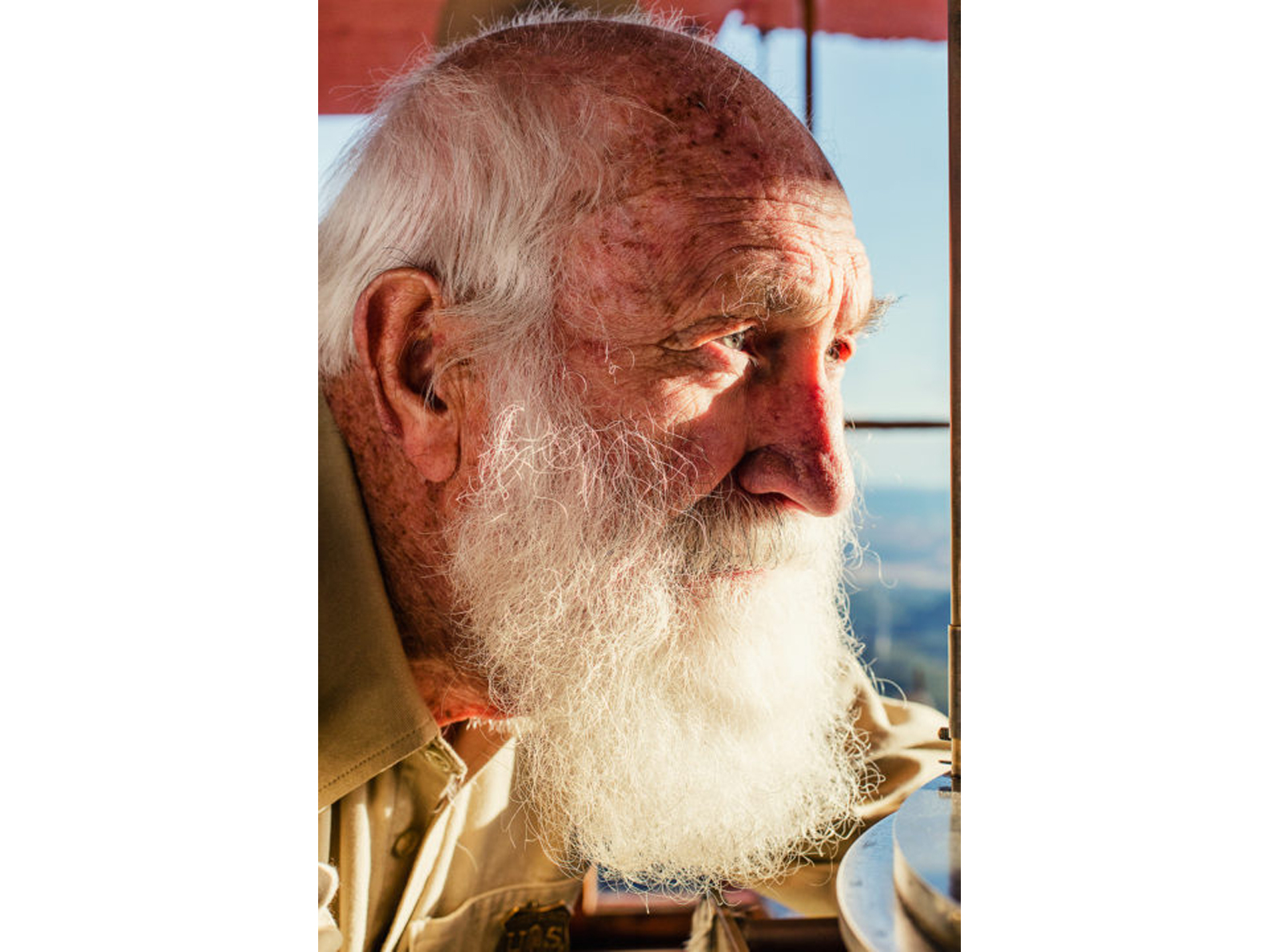The Local newsletter is your free, daily guide to life in Colorado. For locals, by locals.
It’s nearing twilight when 85-year-old Billy Ellis steps onto the catwalk of Devil’s Head Lookout to scan the horizon one last time. The view is spectacular: Pikes Peak to the left, the Collegiate Peaks in front, and Mt. Evans to the right. The mountains aren’t what typically catches his eye, though. This year will mark Ellis’ 33rd season monitoring the Pike and San Isabel national forests from his perch atop the 105-year-old lookout, one of Colorado’s last human-staffed fire towers. From May to October, he spends his days alerting the Forest Service to blazes while also preaching fire safety to the 30,000 hikers who make the 1.4-mile trek up the Devil’s Head Lookout Trail each year. We sat down with Ellis—who has no plans to retire—to get the details about his storied tenure.
Resumé
Name: Billy Ellis
Age: 85
Occupation: Fire Spotter
5280: How many fires did you spot in the past year?
Billy Ellis: Eleven total, which is higher than the average the last few years. In 1984, though, I spotted more than 30. In 1986, I spotted 12 near Cheesman Lake in a matter of minutes.
Is it usually just you out here?
BE: My wife of 55 years, Margaret, has been with me for 29 of the 32 summers. She helps me with all of the maintenance for the top of the trail and the nearby cabin where we live. Since there’s no motorized access, we also have to hike down for supplies once a week or every other week. Sometimes the Pike forest crews help us out.
You have nine children. Have any of them spent a fire season here?
BE: In 1966, when I was an alternate lookout, Margaret would take turns backpacking our then six kids up, [and they stayed in the cabin with us]. In 1984, we brought the last three. When the boys were old enough, they started working for the Forest Service as firefighters and law enforcement agents. At one time, there were six Ellis family members working for the district.
Do you have any days off?
BE: I’m the only one who staffs the lookout, and I usually work five days a week. But if there are forecasted lightning storms or red-flag warnings [meaning conditions are ripe for wildfires, usually in periods of drought or when winds are high], then I’ll work on the weekends to provide an extra eye on the forests.
What is a typical day like?
BE: I usually wake up at 5:30 or 6 a.m. and have a cup of coffee with Margaret before we do the morning chores. I’m up to the tower by 9:30, or earlier if there is a red-flag warning. I walk around the catwalk every 15 minutes, checking for smoke with binoculars. I’m constantly watching or talking to the many visitors. I finish my day around 6 p.m., unless there is lightning or a fire. In those cases, I stay outside until the fading light means I can no longer see.
What’s the motivation behind the work you’re doing?
BE: I was in the military way back when and always loved the great outdoors. Living on top of a mountain really excited me. I began as a relief lookout and eventually gained the head lookout position. It’s a rush being the first to report a fire. You spend all of this time up there looking and looking, and to finally spot one makes you feel worthwhile.












